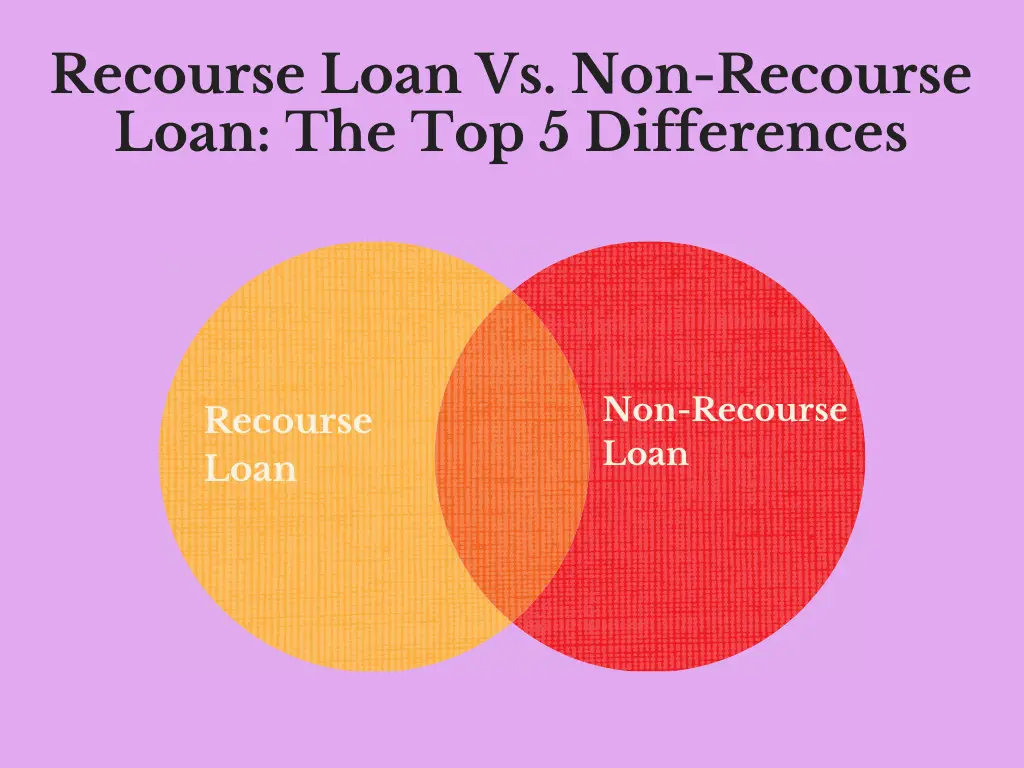All secured loans require collateral. The borrowers pledge an asset as collateral to get the loans. In case of default, the borrowers have the right to seize the collateral pledged. That is the reason, lenders prefer tangible assets with high market values. In many cases, borrowers default on a loan.
The collateral often does not fully recover the remaining amount of the loan. The legal actions associated with a default after a foreclosure differentiate a recourse and non-recourse loan.
Recourse Loan gives lenders the right to seize the pledged asset. In case of default, lenders can also go after any other asset or income source of the borrower.
In a non-recourse loan, the lender cannot seize any other assets other than the pledged one as collateral.
Most conventional bank loans work as recourse loans. Similarly, most mortgages and home equity loans work as non-recourse loans. Nature and legal rights associated with both types, make them totally at odd ends as the preference for both parties.

Some key differences in both types of loans are:
| Feature | Recourse Loan | Non-Recourse Loan |
| Parties in Contract: | Borrower and Lender | Borrower and lender |
| Collateral: | Pledged and other assets | Only pledged asset |
| Borrower liability: | Personally liable | Not personally liable |
| Interest Costs: | Lower | Higher |
| Credit Requirements: | Lower | Higher |
| Preferred by: | Lenders | Borrowers |
| Total costs: | Lower | Higher |
1) The Claim by the Lenders
In case of default on a loan, the legal claim on the assets held by the borrower makes the primary difference. The pledged asset or source of income remains at stake for both types of loans. However, in many cases, the pledged assets cannot recover the remaining balance of the default loan.
A recourse loan gives the lenders a right to seize any assets of the borrower in case of default. The lender may recover the remaining loan balance from other sources of income of the borrower.
In a non-recourse loan, the lenders can only seize the pledged asset only. If the market value of the pledged asset remains lower than the recoverable amount, the lenders do not have the right to seize any other assets.
In other words, the borrowers are personally liable for default in a recourse loan only.
2) Credit Score Requirements
This leads us to the secure nature of both loan types. With more powers to the lenders, a recourse loan becomes less risky. A non-course loan is less secured for the lenders. Lenders always prefer secured loans over non-secured loans. Hence the credit score required for a non-recourse loan will always be higher.
Lenders will accept somewhat lower credit scores in a recourse loan if the borrower possesses substantial assets. These assets do not offer much to lenders in a non-recourse loan though.
3) Interest Rates
As we all know, lenders certainly charge higher interest rates with non-secured loans. A non-recourse loan offers less security to the lender, hence they charge higher interest rates. Contrarily, the interest rates will be lower for a recourse loan.
The total interest costs associated with a loan depend on some other factors too. For example, the central bank interest rate (LIBOR) plays an integral part in determining the total interest costs of a loan. However, the prime interest is decided by the lenders on the nature of the loan.
Borrowers will be better off in recourse loans as far as the interest rates are concerned. Although, borrowers risk more assets with recourse loans in case of loan defaults.
4) Collateral Value and Credit History
Some assets depreciate in value quickly. These pledged assets for loans offer risky options to lenders. For example, in an auto loan, the market value of the car significantly falls the moment car hits the roads. For that reason, an auto loan will almost always be a recourse loan.
Lenders will demand stricter conditions with a non-recourse loan. A lower debt-to-income ratio, high market value of the asset, and clean credit history. Thus qualifying for a non-recourse loan will be more difficult for the borrower.
So if the credit score of the borrower is lower, the lender would ask for a high-value asset as collateral. In other words, with a lower credit profile, the lenders would prefer a recourse loan.
5) Tax Considerations
The tax implications for both types of loans can vary depending on the foreclosure type. If the lenders can recover the full remaining balance of the loan after a foreclosure, there will be no repayments. In most cases, the loan forgiveness balances occur in a recourse loan.
The lenders return the forgiveness loan amounts above the remaining loan and legal charges, which may result in a tax bill for the borrower.
Any proceeds after the collateral seizure and loan forgiveness are usually considered taxable income for the borrowers.
